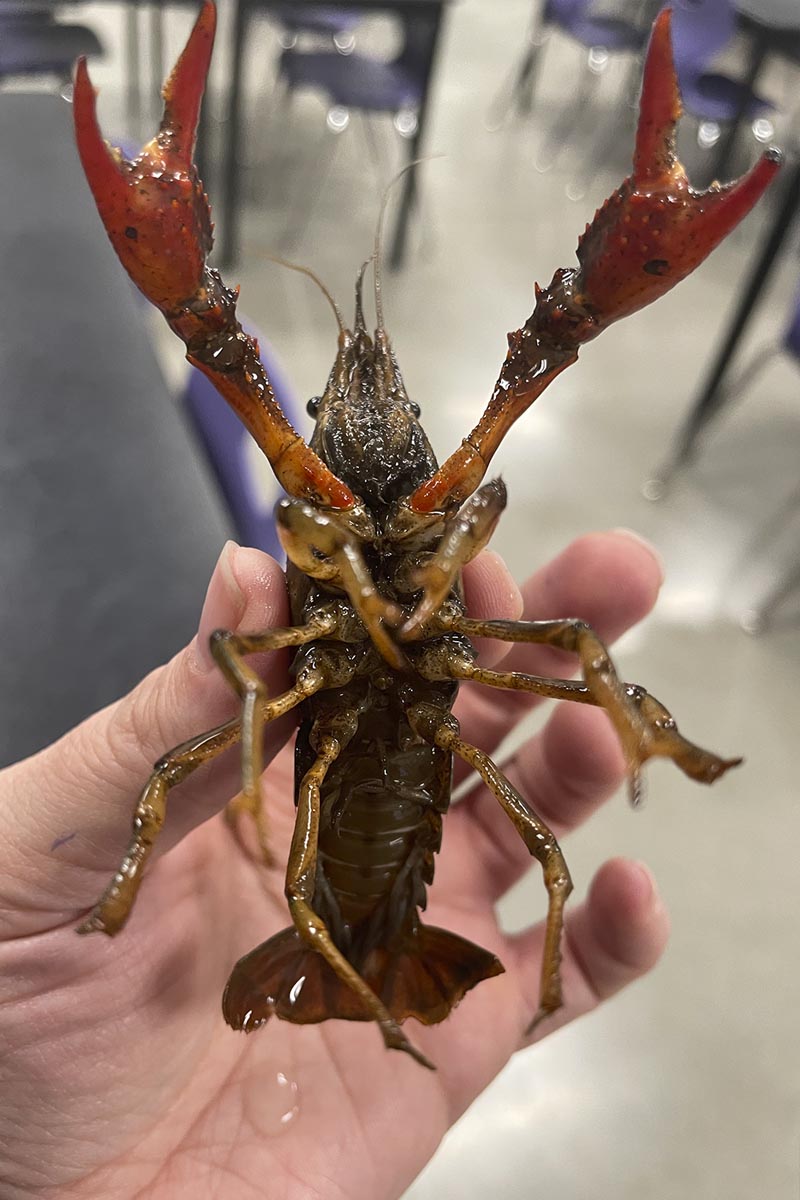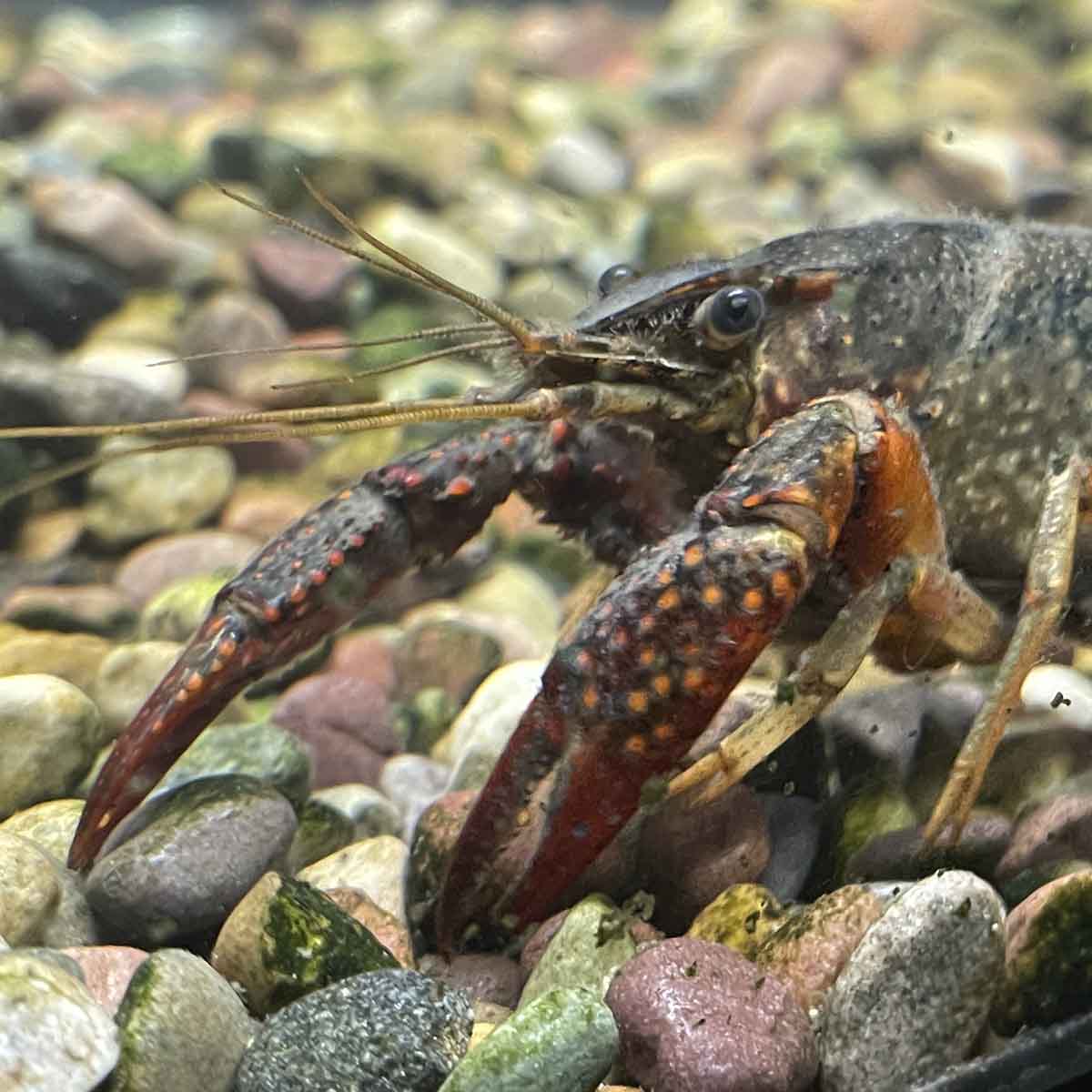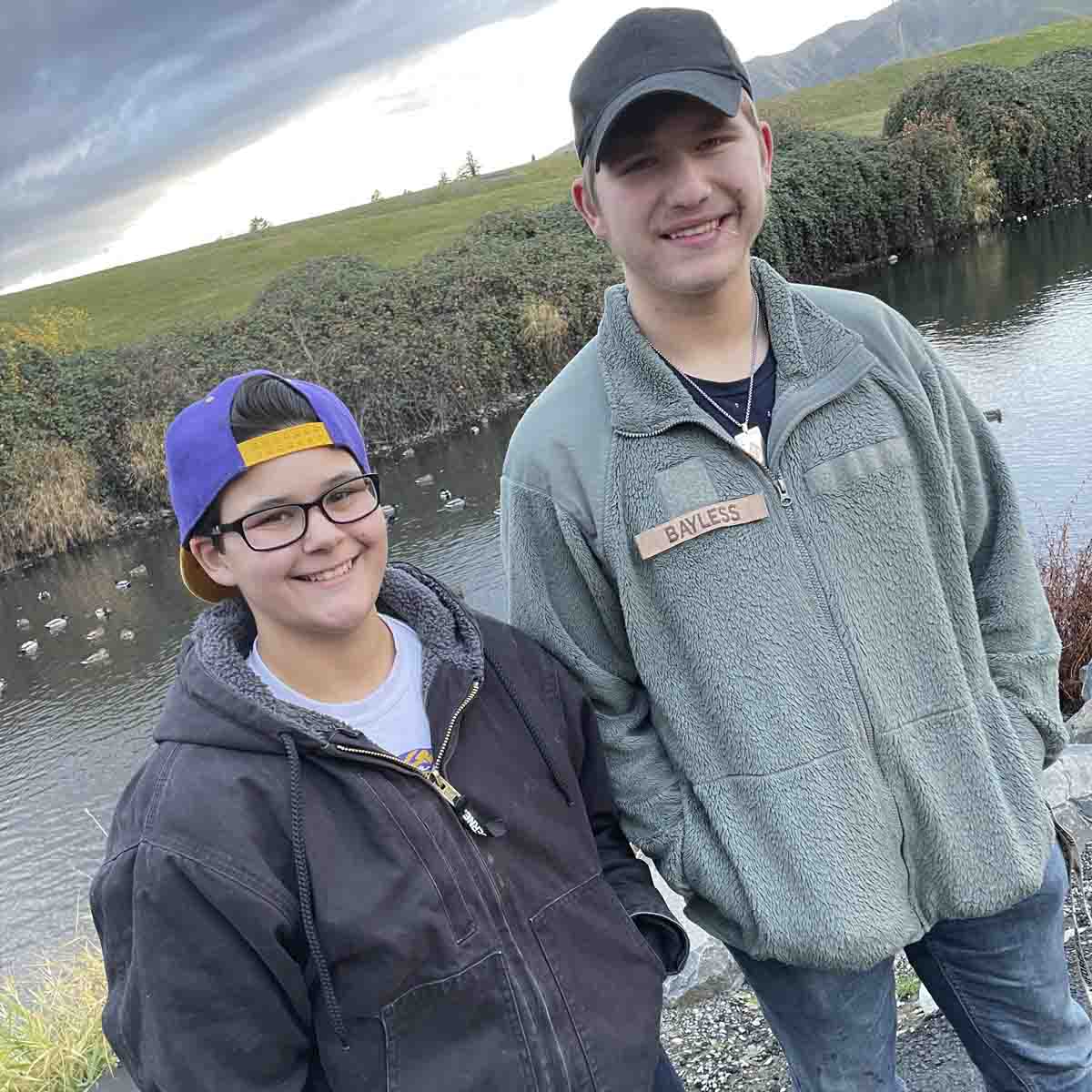Aquatic Invader
IDAH2O participants discover red swamp crayfish in Idaho
A Lewiston High School teacher and two of her former students recently became published authors in a peer-reviewed scientific journal based on their discovery while participating in a University of Idaho Extension citizens’ science program.
For the past seven years, UI Extension’s IDAH20 program has provided hands-on learning opportunities for Lewiston High School teacher Jamie Morton’s ecology and environmental science classes, which sample water and trap invertebrates in local watersheds. Morton shares their data to help UI Extension assess the health of Idaho’s waterways.
In October 2021, one of Morton’s IDAH20 field trips uncovered an important scientific finding that led state and federal water managers to take action.
While investigating a pair of municipal stormwater ponds near the confluence of the Snake and Clearwater rivers, Morton’s class trapped a crustacean they later confirmed to be Idaho’s first known red swamp crayfish. If the aquatic invader multiplies in the surrounding environment, it could harm water quality and native species.
For their discovery, Morton and former students Elizabeth Connerley and Robert Bayless are among the listed authors of a paper in the journal “BioInvasions Records.”
“It’s a genuine, honest discovery. And I hope it creates more buy-in with my classes as we go on, especially when it’s officially published,” Morton said. “We can make a contribution just being normal citizens. You don’t have to go to college and you don’t have to become a scientist in your day job to be interested and take care of your environment.”
Throughout the past decade, IDAH2O has taught basic water quality monitoring techniques to more than 600 citizen scientists throughout the Pacific Northwest. Active participants receive pH test strips, kits for measuring dissolved oxygen in water and other basic supplies to record stream data, which they upload via a web app.
In addition to having volunteers collect data on stream health, Jim Ekins, UI Extension area water educator and director of IDAH20, trains his volunteers to identify and report crayfish species for River Mile, which is a network of educators and students who study crayfish in the Pacific Northwest to better understand stream health.
Ekins also partners with like-minded organizations in Idaho, eastern Washington and eastern Oregon, training other trainers for IDAH20.
“We think citizen science may be a good way to find new invasions of invasive species. There are that many more eyeballs,” Ekins said. “Plus, we are teaching kids science, being observant and writing things down. Those are skills you need for any job.”
Typically, Morton’s classes trap and identify one of Idaho’s three native crayfish species. The red coloration and bumpy, pointy claws made the red swamp crayfish specimen relatively easy for the class to identify by comparing it with River Mile photographs. A crayfish expert confirmed their suspicions, which were reaffirmed through DNA testing.
Two of Morton’s students — Connerley and Bayless — were captivated by the discovery and continued trapping crayfish outside of class in the following weeks. They trapped six more red swamp crayfish from the ponds, proving the original finding wasn’t an isolated occurrence. The U.S. Army Corps of Engineers has continued monitoring the ponds and the surrounding area.
“The best part was seeing the students who wanted to participate and were motivated to continue doing it because they wanted to,” Morton said.
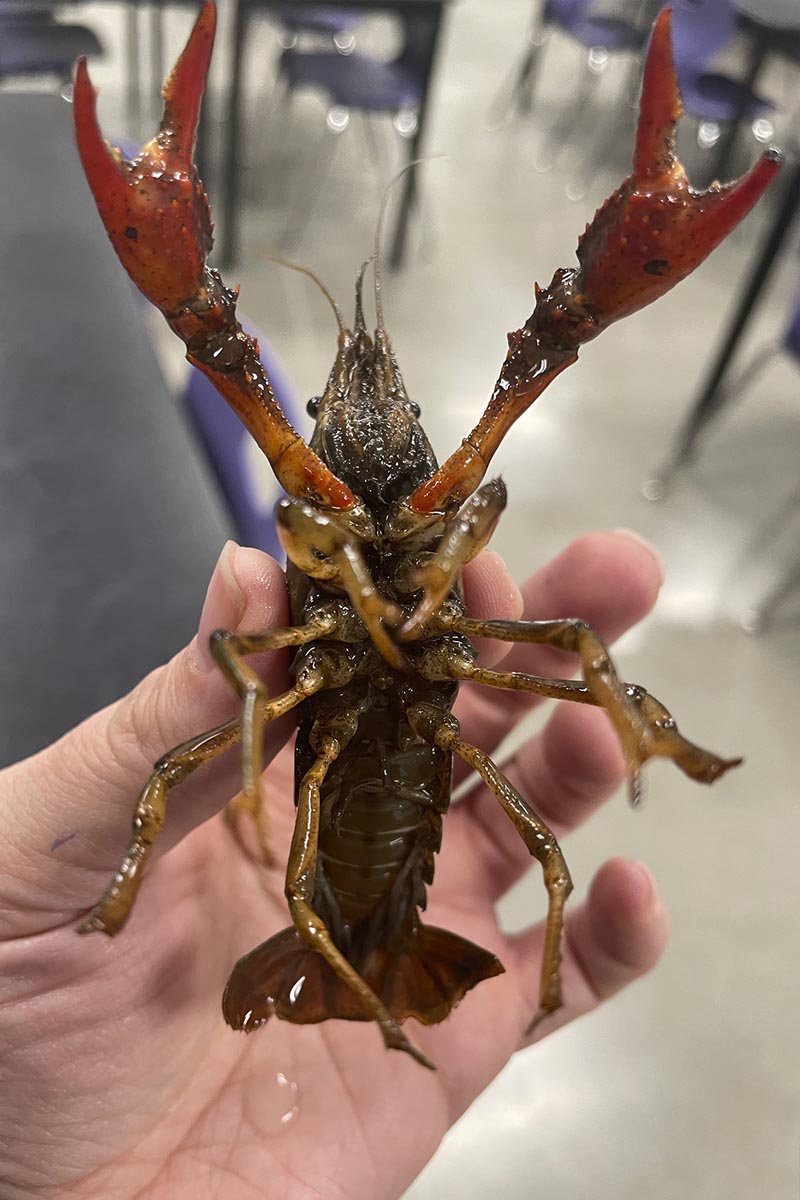
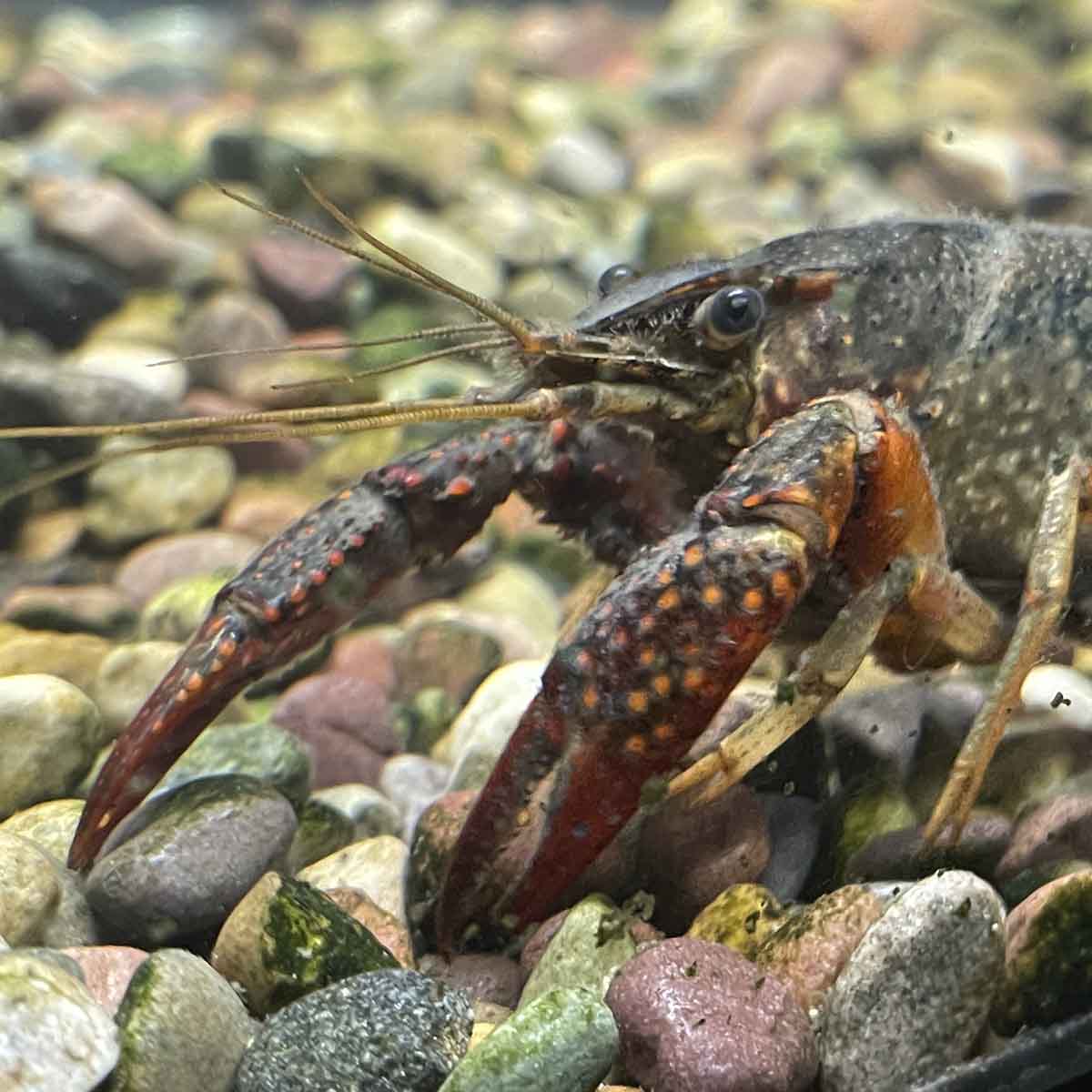
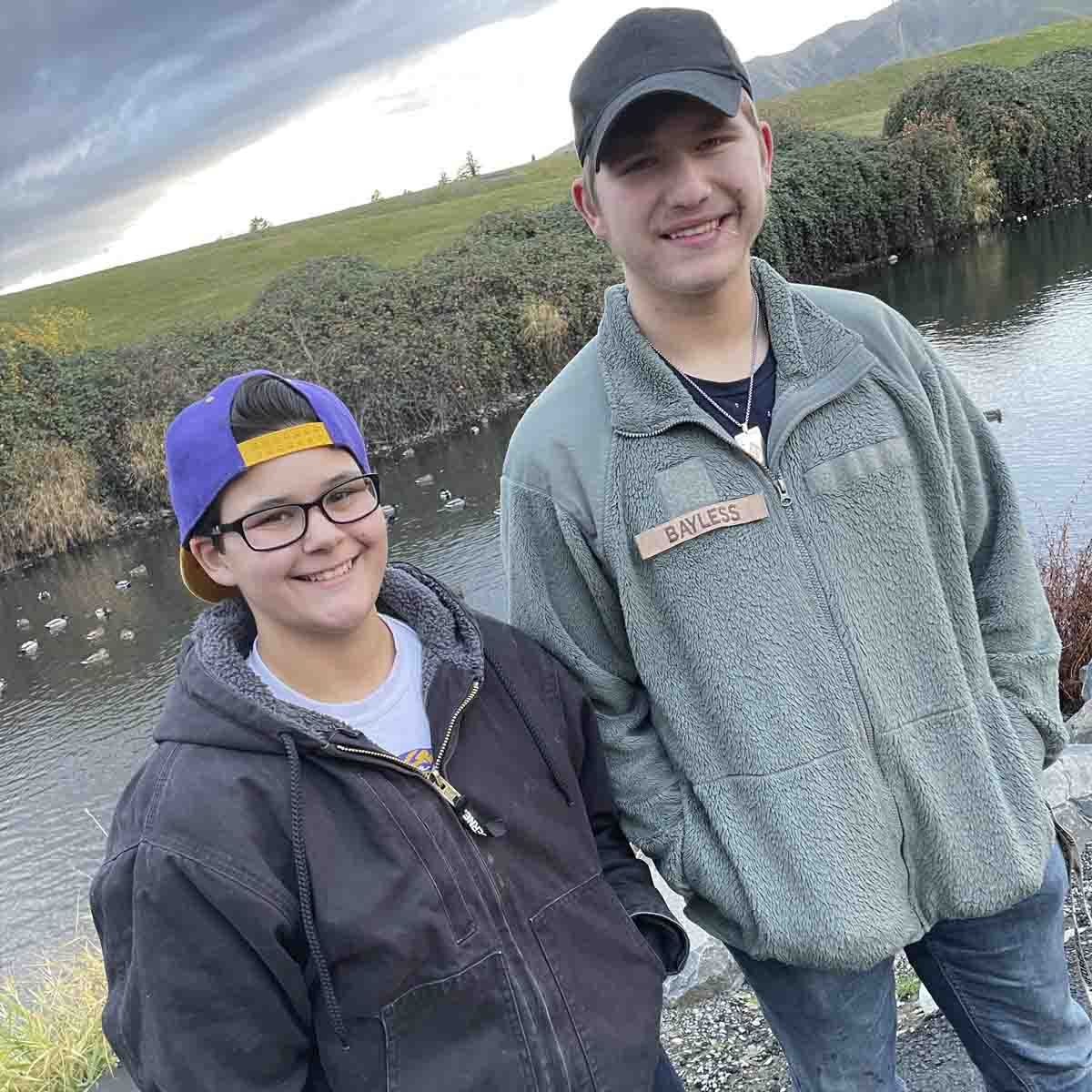
Article by John O’Connell, College of Agricultural and Life Sciences
Photos provided by Jamie Morton and iStock
Published in March 2023







